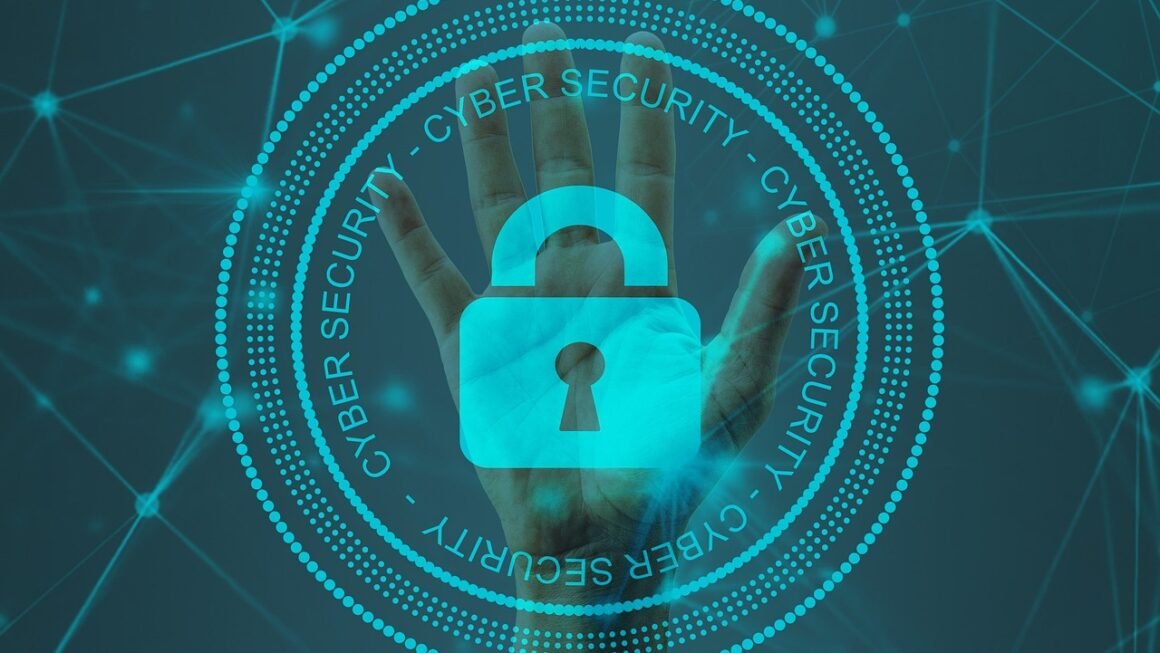Securing your digital perimeter is no longer enough. Today’s dynamic threat landscape demands a more nuanced approach that extends protection to every device accessing your network: the endpoint. From laptops and smartphones to servers and IoT devices, understanding and implementing robust endpoint security measures is crucial for safeguarding sensitive data, maintaining business continuity, and preventing costly breaches. This post will delve into the core principles of endpoint security, exploring its components, best practices, and the critical role it plays in a comprehensive cybersecurity strategy.
What is Endpoint Security?
Defining Endpoint Security
Endpoint security refers to the practice of securing devices (endpoints) that connect to a network. These endpoints can include:
- Laptops
- Desktops
- Smartphones
- Tablets
- Servers
- Virtual machines
- IoT (Internet of Things) devices
It involves implementing security measures to protect these devices from threats such as malware, phishing attacks, ransomware, and data breaches. Endpoint security solutions are designed to detect, prevent, and respond to these threats, ensuring the overall security and integrity of the network.
Why is Endpoint Security Important?
The rise of remote work, BYOD (Bring Your Own Device) policies, and the increasing sophistication of cyberattacks have made endpoint security more critical than ever. Without proper protection, endpoints can become vulnerable entry points for malicious actors. Consider these reasons:
- Increased Attack Surface: Every connected device represents a potential entry point for attackers. More devices mean a larger attack surface.
- Data Protection: Endpoints often store sensitive data, making them prime targets for data theft.
- Business Continuity: Compromised endpoints can disrupt operations, leading to downtime and financial losses.
- Compliance Requirements: Many industries are subject to regulations (e.g., HIPAA, GDPR) that mandate endpoint security measures. Failure to comply can result in hefty fines.
- Remote Work Challenges: Securing devices used outside the traditional office environment presents unique challenges, as these devices are often connected to less secure networks.
For example, a company laptop used on a public Wi-Fi network in a coffee shop is a prime target for hackers. Without proper endpoint security, sensitive customer data could be compromised, resulting in significant legal and reputational damage.
Key Components of Endpoint Security Solutions
Antivirus and Anti-Malware
Antivirus and anti-malware software are fundamental components of endpoint security. They work by:
- Scanning files and programs: Identifying and removing known malicious software based on signature databases.
- Behavioral analysis: Detecting suspicious activities that may indicate a malware infection.
- Real-time protection: Monitoring system activity and blocking malicious code before it can execute.
Example: A user unknowingly downloads a file containing a virus. The antivirus software detects the virus and quarantines the file, preventing it from infecting the system and spreading to the network.
Endpoint Detection and Response (EDR)
EDR solutions provide advanced threat detection and response capabilities, going beyond traditional antivirus. EDR systems typically include:
- Continuous monitoring: Collecting and analyzing endpoint data in real-time to identify suspicious activities.
- Threat intelligence: Leveraging threat intelligence feeds to identify known threats and emerging attack patterns.
- Automated response: Automatically isolating infected endpoints, removing malware, and restoring systems to a clean state.
- Forensic analysis: Providing tools for investigating security incidents and identifying the root cause of attacks.
Example: An EDR system detects a suspicious process running on an endpoint that is attempting to encrypt files. The system automatically isolates the endpoint from the network and alerts the security team, preventing a ransomware attack from spreading.
Firewalls
Endpoint firewalls act as a barrier between the endpoint and the network, controlling network traffic based on predefined rules. They can:
- Block unauthorized access: Preventing unauthorized applications and services from accessing the network.
- Filter network traffic: Inspecting incoming and outgoing traffic for malicious content.
- Protect against network-based attacks: Blocking attempts to exploit vulnerabilities in endpoint software.
Example: An endpoint firewall blocks a malicious website from accessing a user’s computer, preventing a drive-by download attack.
Data Loss Prevention (DLP)
DLP solutions help prevent sensitive data from leaving the organization’s control. They can:
- Monitor data in use: Tracking how users access and use sensitive data.
- Prevent data leakage: Blocking attempts to copy, print, or email sensitive data to unauthorized locations.
- Enforce data security policies: Ensuring that users comply with data security policies.
Example: A DLP system prevents an employee from emailing a file containing confidential customer data to a personal email address.
Best Practices for Endpoint Security
Implement a Strong Password Policy
A strong password policy is a fundamental security measure. It should include:
- Password complexity: Requiring users to create passwords that are at least 12 characters long and include a mix of uppercase and lowercase letters, numbers, and symbols.
- Password rotation: Requiring users to change their passwords regularly (e.g., every 90 days).
- Password reuse prevention: Preventing users from reusing old passwords.
- Multi-factor authentication (MFA): Enabling MFA for all accounts, requiring users to provide multiple forms of authentication (e.g., password and a code from their mobile device).
Example: Enforce a policy where passwords must be at least 12 characters long, include at least one uppercase letter, one lowercase letter, one number, and one symbol. Mandate password changes every 90 days and require MFA for all users accessing company resources.
Keep Software Updated
Software updates often include security patches that address known vulnerabilities. It’s crucial to:
- Patch operating systems: Install the latest security updates for operating systems (e.g., Windows, macOS, Linux).
- Update applications: Keep all applications up to date, including web browsers, plugins, and productivity software.
- Automate patching: Use automated patching tools to ensure that updates are installed promptly.
Example: Use a patch management system to automatically install security updates for Windows and third-party applications on all endpoints as soon as they are released.
Endpoint Encryption
Encrypting endpoint hard drives protects data even if the device is lost or stolen. This can involve:
- Full disk encryption: Encrypting the entire hard drive, requiring a password or other authentication to access the data.
- File-level encryption: Encrypting individual files or folders containing sensitive data.
Example: Implement full disk encryption on all company laptops, ensuring that data remains protected even if a laptop is lost or stolen.
Employee Training and Awareness
Employees are often the weakest link in the security chain. Training them to recognize and avoid threats is essential. Training should cover:
- Phishing awareness: Teaching employees how to identify phishing emails and avoid clicking on malicious links.
- Social engineering: Educating employees about social engineering tactics used by attackers.
- Safe browsing habits: Promoting safe browsing practices and cautioning against visiting suspicious websites.
- Incident reporting: Instructing employees on how to report security incidents.
Example: Conduct regular phishing simulations to test employees’ ability to identify phishing emails. Provide ongoing training on cybersecurity best practices and emerging threats.
The Future of Endpoint Security
Artificial Intelligence (AI) and Machine Learning (ML)
AI and ML are playing an increasingly important role in endpoint security. They can be used to:
- Detect anomalies: Identifying unusual patterns of activity that may indicate a threat.
- Automate threat response: Automatically responding to threats based on predefined rules and AI-powered analysis.
- Improve threat intelligence: Analyzing vast amounts of data to identify emerging threats and attack patterns.
Example: An AI-powered EDR system detects an unusual pattern of network activity on an endpoint and automatically isolates the device from the network, preventing a potential breach.
Cloud-Based Endpoint Security
Cloud-based endpoint security solutions offer several advantages, including:
- Scalability: Easily scaling security solutions to meet changing needs.
- Centralized management: Managing endpoint security from a central console.
- Reduced infrastructure costs: Eliminating the need to maintain on-premises security infrastructure.
Example: A company uses a cloud-based EDR solution to protect its endpoints, benefiting from centralized management, automatic updates, and reduced infrastructure costs.
Zero Trust Architecture
The zero-trust approach assumes that no user or device is inherently trustworthy, regardless of whether they are inside or outside the network perimeter. This requires:
- Continuous authentication: Verifying user identity at every access request.
- Least privilege access: Granting users only the minimum level of access required to perform their job duties.
- Micro-segmentation: Dividing the network into smaller segments to limit the impact of a breach.
Example: A company implements a zero-trust architecture, requiring users to authenticate with MFA every time they access sensitive data, even if they are on the corporate network.
Conclusion
Endpoint security is a vital component of any comprehensive cybersecurity strategy. By understanding the key components of endpoint security solutions, implementing best practices, and staying abreast of emerging trends, organizations can significantly reduce their risk of cyberattacks and protect their sensitive data. Investing in robust endpoint security is not just a technical requirement; it’s a strategic imperative for maintaining business continuity and building trust with customers. Prioritizing endpoint security demonstrates a commitment to data protection and security, safeguarding your business against the evolving threats of the digital landscape.



